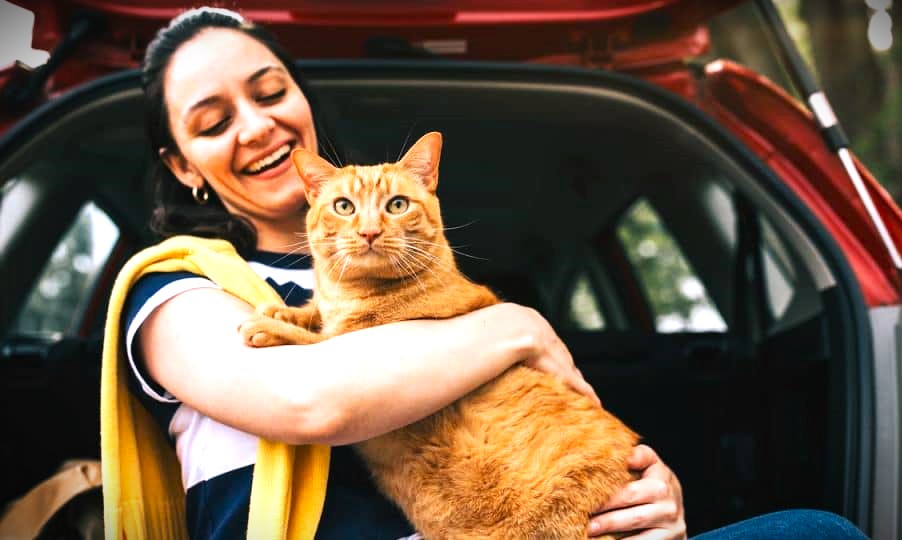Cats are incapable of imagining anything that has never happened to them. Rather, they reminisce about past encounters and anticipate a repeat of those events. Some pets detest traveling because their first car rides aren’t always enjoyable.
Assist cats in associating cars with joyful and enjoyable events rather than merely veterinary visits. It requires time and patience and is known as desensitization using classical conditioning; it is effective whether your cat displays hyperactivity, fear, or illness. When he understands that a car ride brings him wonderful things, you can use positive reinforcement to make him look forward to each trip.

Eight Cat Car Travel Tips
- It is advised that kittens and cats travel in car carriers for their own safety. If a pet gets loose, it can become a furry projectile in an accident. Not the infant on your lap or beneath the pedals, but the road and other vehicles require the driver’s attention. Because an airbag will crush a pet if it is on the front seat during an accident, even well-behaved cats left loose in a car could suffer injuries. Thus, before you leave for your trip, make sure the cat has been trained in a crate.
- It helps if cat feels good about the car before you start the engine, even though he’ll be inside a crate. Due to their sensitivity to territory and environment, cats would rather be at home in comfortable surroundings. Therefore, make the car familiar to Kitty by rubbing his cheeks and letting him spread his scent to mark the vehicle as his own. This will make him feel more at ease and content when traveling.
- Put the cat’s blanket, bed, or a towel from inside the car on the back seat after giving him a pet. In this manner, his aroma is already present. The cat may feel more at ease if Comfort Zone with Feliway is sprayed on the towel or the upholstery of the car.
- Take your cat inside the car, shut the door, and allow him to take a few sniffs and explorations. Make sure kittens don’t crawl into the crevices beneath the dashboard. It’s enough time—five minutes. In the event that the cat acts overwhelmed, be prepared to reintroduce him to a safe and comfortable environment. Fluffed fur, downturned ears, an active tail, and vocalizations are possible visual cues. For several days, keep doing this five-minute car visitation a few times a day, increasing the amount of time the cat is calm.
- Set aside time for your car after meals. Once he settles down in the car, feed him all of his meals there for a week, or give him expensive treats that he won’t get any other time. Give your cat treats during the car ride if he is more driven by play or catnip. He ought to discover that these wonderful things in life only occur when you’re close to a car.
- It is best to combine car visits with crate training. After cat has acknowledged the car as his domain, put him in his carrier, position it so that the back seat is out of the way of the airbag, and turn the engine on. After that, switch off the engine and leave without moving. Repeat this three or four times a day until the pet starts doing it on its own. After he’s out of the crate, you’ll always give him lots of playtime or other treats.
- When the car is finally started, back it to the end of the driveway and come to a stop. Repeat these steps two or three times, making sure the pet is always let outside upon your return. You might be going too quickly for the pet if he does not want to move or cries. It is a laborious process, but it is effective.
- Step-by-step increase the amount of time spent in the car: drive home after a block-long excursion, then drive down the street and back, and so forth. Make each car ride cheerful and enjoyable for the cat so that they will eagerly anticipate the next one.




